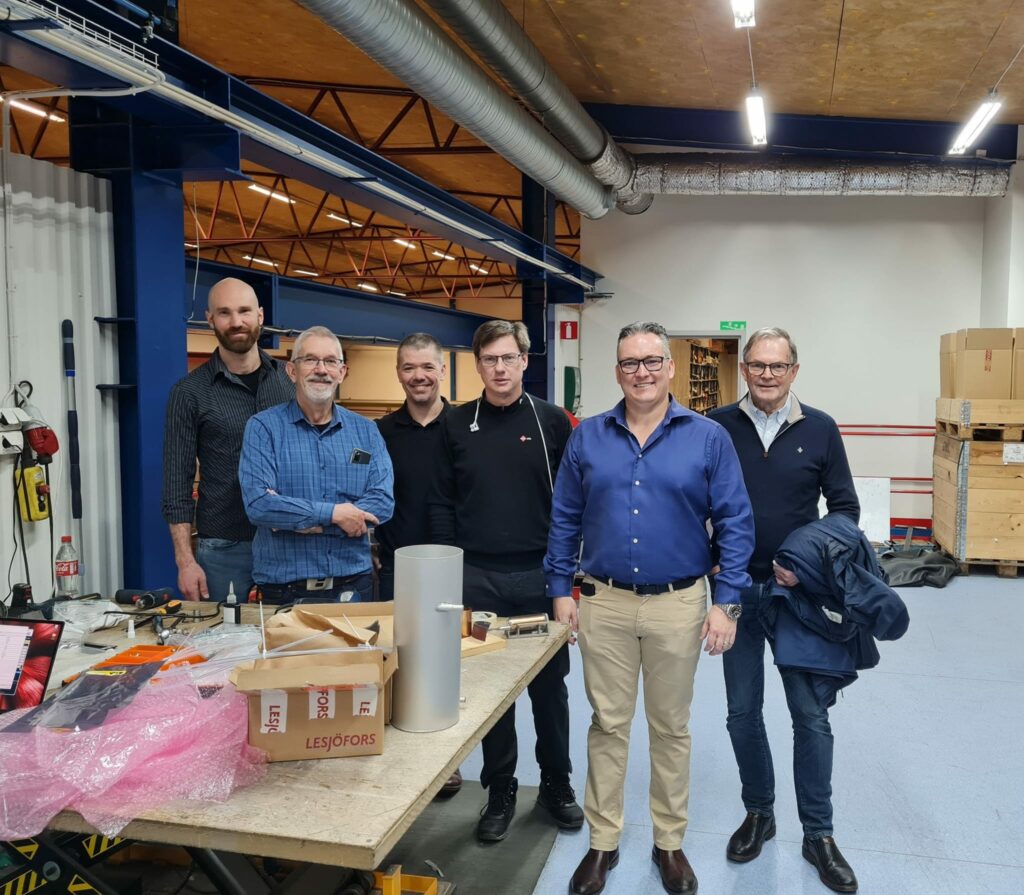Follow us for all the latest news and updates.
Show news by category:

5 years ago, we exhibited with Win Water at the Elmia Fair. Back then, our company was just starting out. Time has passed, and now it’s PBS’s turn to exhibit again. From October 24th to 26th 2023, you’re welcome to come and chat with us when we participate in VATTEN2023 at the Swedish Exhibition & Congress Centre (Svenska Mässan) in Gothenburg.
There, you can see and experience what we’ve created and gain insight into how we can purify water using air (which becomes ozone) and energy from the sun.
Booth B06:71
Check out www.motesplatsvatten.se
💙


PBS’ intention and ambition from the beginning has been to have a product adapted to difficult situations, harsh environments and humid climates. A product that can be of great use in vulnerable areas, off-grid. A product which is robust and can be easily handled in a situation of crisis and disaster. These thoughts have been around since start and with that in mind we have developed our (H)unit, even though along the way we have found a number of applications that are in complete different areas.
In 2021, we applied to Sustaid, which is a collaboration forum for sustainable innovations
in international crisis and disaster as well as development aid. I am happy to say that we were choosen as one of the 25 selected companies for the program.
Through Sustaid, we receive business development assistance adapted for this niche, education in procurement as well as education regarding the UN Global Sustainability Goals (SDGs), etc. We also enjoy lectures and personal contact with key people in aid organizations (such as the Medical Mission ”Läkarmissionen”, SIDA and the Red Cross), the Swedish Civil Contingencies Agency (MSB), The Swedish Defense Research Agency (FOI), the education system (such as KTH) and others.
Grateful to be part of Sustaid and interesting to see how we can open up for this first thought market.
For more info, please visit https://sustaid.se/in-english/
So,
By a system of biological sewage treatment ponds PBS set up a little test site. We simulated a sewage water flow of around 100 litres per hour, which is corresponding to a wastewater treatment/sewage system for about 20 people (counting a standard of 120 litres per person over 24 h). In this case we first collected 800 litres of sewage water from the first pond where water is let out directly from the septic tank/sludge separator, i.e. water with very high content of microbial contamination as well as other pollutants common in sewage water. Then we treated this water with one of our (H)units over given time periods, eg. 4h and 8h, and analysed the samples.
To get a better understanding, please watch this video (Note: I say we simulate a flow from a small household system, which is wrong. It is the above figures that are correct):
We see some very interesting results and proof of concept. Basically, we kill the microbial contamination and reduce the biological and chemical pollution significantly.
In regards of bacterial levels, this heavily contaminated water had after 8 hours of our treatment ”swimming water quality”, i.e. the levels required at shorelines and beaches.
The samples are taken from the flowing water (hose) going back into the raw water tank after it being circulated a certain time.
Here follows an extract:
| Analysed parameter | Untreated reference | PBS treatment 4h | PBS treatment 8h |
| E.Coli (cfu/100 ml) | 35 000 | – | <10 |
| Coliform bacteria (cfu/100 ml) | >100 000 | 4 000 | 99 |
| Intestinal enterococci (cfu/100 ml) | 4100 | – | <10 |
| Color (mg/l Pt) | 100 | 40 | 25 |
| pH | 7.7 | 8.0 | 8.2 |
| Total phosphorus (mg/l) | 1,9 | – | 0.68 |
| Total nitrogen (mg/l) | 30 | – | 27 |
| BOD7* (mg/l) | 40 | – | 18 |
| COD* (mg/l) | 130 | 86 | 61 |
Welcome to contact us for lab reports and further info. Cheers!
Full article →This week we received the test results (Synlab) on our most recent tests 2021-03-01 where we disinfected kegs from a brewery.
We are here simulating to replace their own disinfection step in their cleaning process, which includes hot water rinsing, and instead flowing our gas mix through the kegs.
Welcome to contact us to see the lab reports. The results where we found the right settings were great.
””Keg 6” was the most polluted keg so far, where we had let microbial contamination grow for a while and one week earlier also scooped around a liter of wastewater, which we then emptied. So it was heavily contaminated.
But look…
After 7 minutes of our treatment, we have completely disinfected the 20 litre keg from:
- Slow growing bacteria
- Cultivable microorganisms
- E coli
- Intestinal enterococci
- Coliform bacteria
- Mold
- Yeast
This results in significant savings in both water and energy use, compared to the hot water treatment.
To be continued….”










